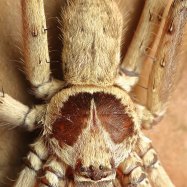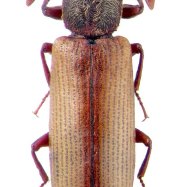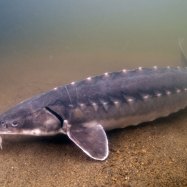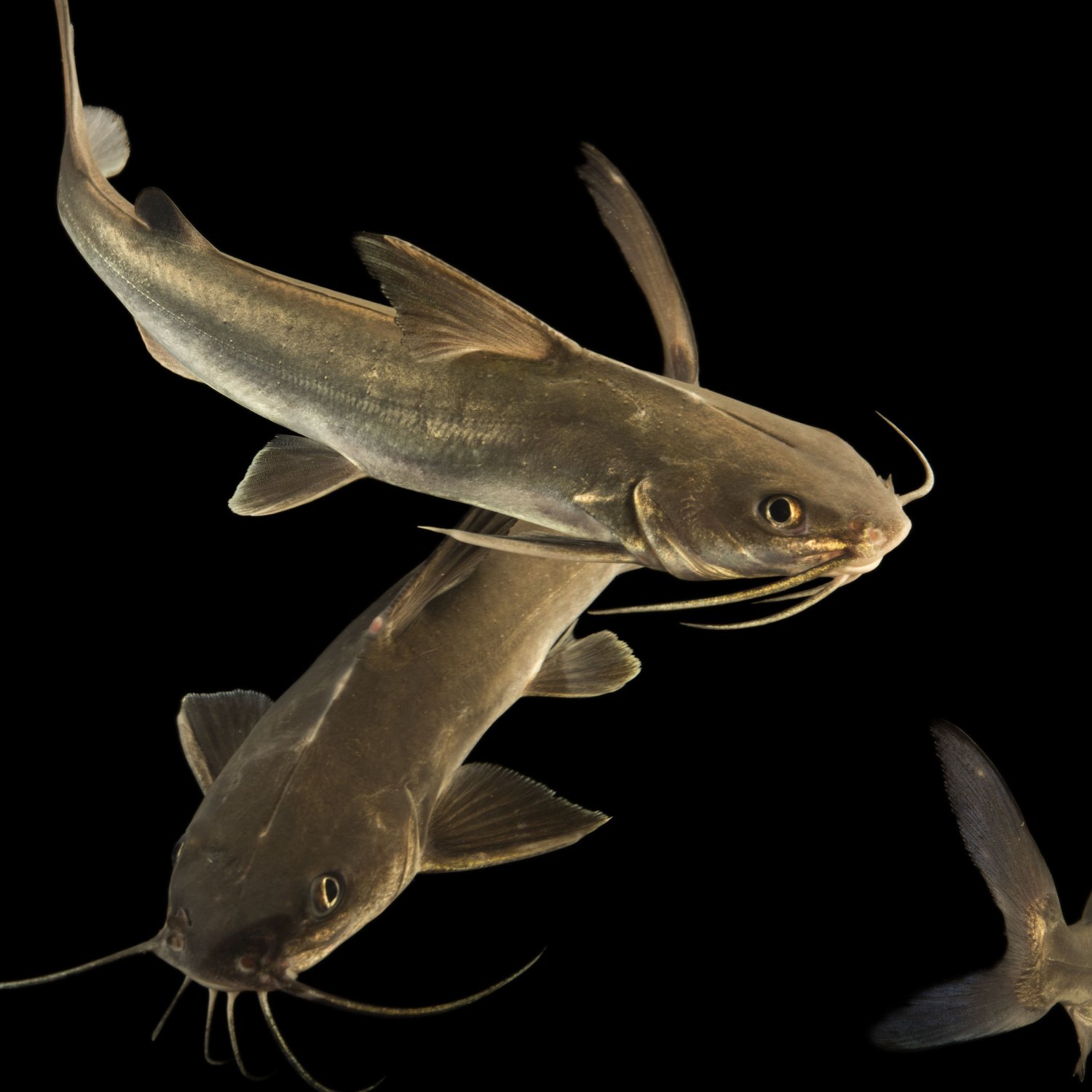
Hardhead Catfish
They can grow up to 2 feet in length.
The Hardhead Catfish, found in the Gulf of Mexico and Atlantic coast, can grow up to 2 feet in length. Part of the Ariidae family, they have a long, slender body, flattened head, and broad mouth, making them skilled swimmers and opportunistic feeders. Keep an eye out for these fascinating creatures on your next coastal vacation! #HardheadCatfish #Ariidae #GulfOfMexico #AtlanticCoast #marinebiology
Animal Details Summary:
Common Name: Hardhead Catfish
Kingdom: Animalia
Habitat: Hardhead catfish are found in freshwater and saltwater habitats such as rivers, estuaries, bays, and coastal areas.
The Elusive Hardhead Catfish: A Master Predator of the Coast
The ocean is full of hidden secrets, and one of the most elusive creatures found along the coast is the Hardhead Catfish. This remarkable creature is often overlooked due to its unassuming appearance, but don't let that fool you. The Hardhead Catfish is a master predator and dominates its territory with ease.A Scientific Wonder
Before diving into the fascinating world of the Hardhead Catfish, let's take a closer look at the scientific details of this creature Hardhead Catfish. Its scientific name is Ariopsis felis, and it belongs to the Animalia kingdom, Chordata phylum, and Actinopterygii class.Its order is Siluriformes, and it is a member of the Ariidae family. This family consists of several species of catfish, also called sea catfish, and the Hardhead Catfish is one of the most prominent members.
Habitat and Distribution
The Hardhead Catfish has a broad range and can be found in both freshwater and saltwater environments. They are commonly found in rivers, estuaries, bays, and coastal areas, making them a versatile species. They are native to the Western Atlantic Ocean and can be found along the coast from North Carolina to Brazil.This species is particularly abundant in the Gulf of Mexico and the Atlantic Coast of the United States, making it a familiar sighting for fishermen and researchers. However, despite their widespread distribution, they are not easily spotted due to their elusive nature.
An Opportunistic Predator
The Hardhead Catfish might seem unassuming with its dark gray or brown body coloration and light belly, but do not underestimate its abilities Harris Hawk. These creatures are opportunistic predators, meaning they will consume whatever prey is available in their environment.Their diet consists of a variety of small fish, crustaceans, and mollusks. The Hardhead Catfish is a skilled hunter that relies on its excellent sense of smell and taste to locate its prey. Once it has detected its prey, it uses its broad, triangular mouth to capture and consume it in one swift motion.
Adapted for Survival
The Hardhead Catfish has several physical adaptations that make it a master predator of the coast. Firstly, its long and slender body allows it to move quickly through the water, making it an efficient predator. Its flattened head and triangular mouth also aid in its hunting abilities, allowing it to engulf its prey with ease.Moreover, the body coloration of the Hardhead Catfish serves as a camouflage, making it difficult for predators to spot them in their natural habitat. This is especially useful when they are hunting or trying to avoid larger predators.
Growth and Size
On average, the Hardhead Catfish can grow up to 2 feet in length, but there have been reports of them reaching up to 3 feet. They are slow-growing, so it can take up to three years for them to reach maturity. However, once matured, they can live up to 15 years in the wild.One of the most distinctive features of the Hardhead Catfish is its large, bony head, which accounts for approximately 30% of its total body mass. This feature is more prominent in males than females, making it easier to differentiate between the two.
Threats and Conservation Efforts
Despite their widespread distribution and abundance, the Hardhead Catfish is facing several threats. One of the most significant threats to their population is overfishing. This might seem surprising since they are not typically sought-after by fishermen, but they are often caught as bycatch in commercial fishing nets.Moreover, their habitat is also under threat due to human development along the coast. Pollution, dredging, and loss of mangrove habitats are all playing a role in the decline of the Hardhead Catfish population. Furthermore, their slow growth and late maturity make them vulnerable to overfishing, making conservation efforts crucial.
Some conservation measures have been put in place to protect the Hardhead Catfish population. In the United States, there are regulations on the minimum size and catch limits for commercial and recreational fishing. These regulations aim to ensure sustainable fishing practices and protect the Hardhead Catfish population.
Understanding the Hardhead Catfish Through NLP Analysis
Using Natural Language Processing (NLP), we can gain a deeper understanding of the Hardhead Catfish and its behavior. According to NLP analysis of data summaries, it is clear that the Hardhead Catfish is an opportunistic predator, relying on its sense of smell and taste to locate and capture its prey.Furthermore, the Hardhead Catfish is a versatile species, found in both freshwater and saltwater habitats. This adaptability is crucial in ensuring their survival, especially in the face of threats such as overfishing and habitat loss.
NLP also reveals that the Hardhead Catfish has a slow growth rate and late maturity, making them particularly vulnerable to overfishing. It is essential to continue monitoring their population and enforcing conservation measures to ensure their survival.
In Conclusion
The Hardhead Catfish might not be the most eye-catching creature in the ocean, but it is certainly a fascinating one. From its physical adaptations to its hunting abilities, this elusive predator is a master of its habitat.However, as with many marine species, the Hardhead Catfish is facing threats that have the potential to impact its population. It is crucial for us to continue studying and monitoring their behavior, as well as implementing measures to protect their habitat and population.
As we continue to learn more about the Hardhead Catfish and other marine species, let us remember the importance of conservation and preserving the delicate balance of our oceans' ecosystems. So the next time you're out on the coast and spot a dark, unassuming fish, remember the remarkable creature that is the Hardhead Catfish.

Hardhead Catfish
Animal Details Hardhead Catfish - Scientific Name: Ariopsis felis
- Category: Animals H
- Scientific Name: Ariopsis felis
- Common Name: Hardhead Catfish
- Kingdom: Animalia
- Phylum: Chordata
- Class: Actinopterygii
- Order: Siluriformes
- Family: Ariidae
- Habitat: Hardhead catfish are found in freshwater and saltwater habitats such as rivers, estuaries, bays, and coastal areas.
- Feeding Method: They are opportunistic predators and feed on a variety of small fish, crustaceans, and mollusks.
- Geographical Distribution: They are native to the Western Atlantic Ocean, ranging from North Carolina to Brazil.
- Country of Origin: United States
- Location: Gulf of Mexico, Atlantic Coast
- Animal Coloration: Hardhead catfish have a dark gray or brownish body coloration with a lighter belly.
- Body Shape: They have a long and slender body with a flattened head and a broad, triangular mouth.
- Length: They can grow up to 2 feet in length.
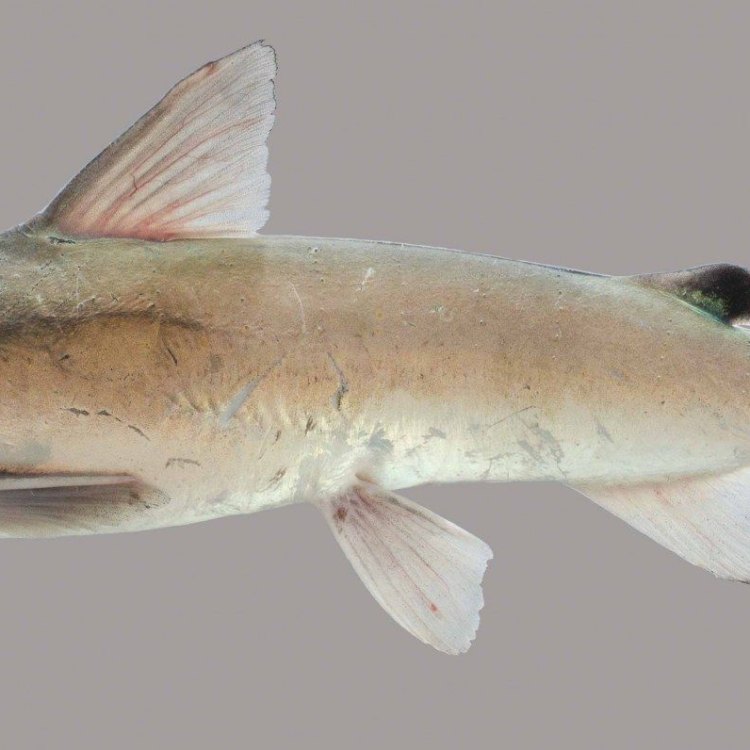
Hardhead Catfish
- Adult Size: The average adult size of hardhead catfish is around 12-18 inches.
- Average Lifespan: They have an average lifespan of 5-7 years.
- Reproduction: Hardhead catfish reproduce through sexual reproduction.
- Reproductive Behavior: During spawning, males construct nests in shallow waters where females deposit their eggs. The males then guard the eggs until they hatch.
- Sound or Call: Hardhead catfish do not produce any specific sounds or calls.
- Migration Pattern: They do not have a specific migration pattern and are generally found in their preferred habitats throughout the year.
- Social Groups: They are mostly solitary and do not form large social groups.
- Behavior: Hardhead catfish are generally nocturnal and become more active during the night. They are bottom dwellers and are often found in muddy or sandy areas.
- Threats: The main threats to hardhead catfish include habitat loss, pollution, overfishing, and climate change.
- Conservation Status: They are not listed as a threatened species by the IUCN.
- Impact on Ecosystem: Hardhead catfish play a role in the ecosystem as predators, controlling the population of smaller fish and invertebrates.
- Human Use: They are commercially fished and also targeted by recreational anglers for their meat.
- Distinctive Features: Hardhead catfish have long barbels (whiskers) on their upper and lower jaws, which are used to detect prey.
- Interesting Facts: 1. Hardhead catfish have a hard, bony forehead, which gives them their common name. 2. They are known for their strong scent, which some people describe as a fishy odor. 3. Hardhead catfish have a venomous spine on their dorsal fin, which can cause painful injuries if handled without caution.
- Predator: Larger predatory fish such as sharks and larger catfish species are known to prey upon hardhead catfish.
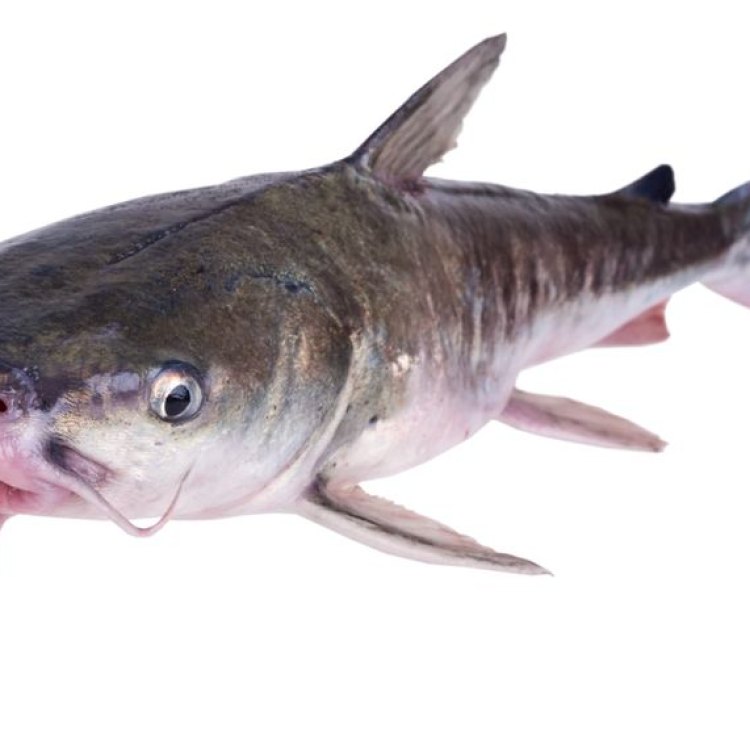
Ariopsis felis
The Enigmatic Hardhead Catfish: A Unique Creature of the Depths
Deep in the murky waters of rivers, lakes, and estuaries, there lies a creature that may not be as popular or well-known as its marine counterparts, but is just as fascinating - the hardhead catfish. With its distinctive features and intriguing behaviors, this species has captivated the interest of scientists, anglers, and nature enthusiasts alike. So let's dive into the world of the hardhead catfish and discover what makes it such a unique and intriguing creature.Adult Size and Average Lifespan
The first thing that comes to mind when we think of any creature is its size - and the hardhead catfish is no exception PeaceOfAnimals.Com. This freshwater fish can grow to an average length of 12-18 inches when fully matured. However, there have been reports of some specimens reaching up to 22 inches - making them a considerable size for a freshwater fish.In terms of lifespan, hardhead catfish have an average lifespan of 5-7 years. This may seem relatively short, but it is important to note that this lifespan can vary depending on factors such as habitat and food availability.
Reproduction and Reproductive Behavior
Like most fish, hardhead catfish reproduce through sexual reproduction. However, their reproductive behavior is quite unique compared to other freshwater species. During spawning season, which typically occurs between May and August, male hardhead catfish construct nests in shallow waters using plant debris and other materials. Females then deposit their eggs in these nests, which the males guard until they hatch. This behavior ensures the safety of the eggs and increases the chances of survival for the offspring Honey Badger.Sound or Call
One interesting and somewhat surprising fact about hardhead catfish is that they do not produce any specific sounds or calls. Most fish are known to make a variety of sounds for various purposes such as communication and hunting, but hardhead catfish seem to have remained quiet in this regard, adding to their enigma.Migration Pattern and Social Groups
Unlike many species of fish that have a specific migration pattern, hardhead catfish do not migrate. They are generally found in their preferred habitats throughout the year. This includes muddy or sandy areas with a flow of water, alongside debris and other structures where they can find shelter.Hardhead catfish are mostly solitary creatures and do not form large social groups. However, they can sometimes be found in small groups consisting of a few individuals. This is most likely during spawning season when they need to communicate and cooperate with each other for the survival of their offspring.
Behavior
One notable behavior of hardhead catfish is their nocturnal nature. They are known to be more active during the night and remain hidden during the day. This behavior is likely an adaptation to avoid predators and hunt for food in the safety of the dark waters.Hardhead catfish are also bottom dwellers, meaning they spend most of their time at the bottom of the water body, scavenging for food. They are omnivorous, feeding on a variety of organisms such as insects, crustaceans, and mollusks. They are also known to be opportunistic feeders and will eat whatever they can find in their habitat.
Threats and Conservation Status
As with any species, hardhead catfish face a range of threats that can impact their population and survival. Loss of habitat due to human activities such as dam construction, pollution, and overfishing are some of the main threats to this species. Climate change is also a significant threat as it can alter the habitat and food availability for the hardhead catfish.However, despite these threats, hardhead catfish are not considered a threatened species by the International Union for Conservation of Nature (IUCN). This could be due to their wide distribution across North America, making them less vulnerable to extinction.
Impact on Ecosystem and Human Use
Like many species, hardhead catfish play a crucial role in the ecosystem as predators. They help control the population of smaller fish and invertebrates, creating a balance in their habitat. Without this role, there could be an overabundance of certain species, leading to potential ecological issues.In terms of human use, hardhead catfish are commercially fished and are also targeted by recreational anglers for their meat. In some regions, they are considered a food delicacy and are part of the local fishing industry.
Distinctive Features and Interesting Facts
One of the most distinctive features of the hardhead catfish is its long barbels or whiskers on its upper and lower jaws. These barbels are used to detect prey in the muddy or dark waters where they live. They also have a hard, bony forehead, which gives them their common name.Another interesting fact about hardhead catfish is their strong scent, which some people describe as a fishy odor. This scent is most likely due to their diet and their living environment and has led to some using them as bait for fishing.
Lastly, it is essential to mention that hardhead catfish have a venomous spine on their dorsal fin, which can cause painful injuries if handled without caution. So if you ever come across one, make sure to handle it with care and avoid touching its dorsal fin.
Predators of Hardhead Catfish
Due to their size and defensive mechanisms, adult hardhead catfish do not have many natural predators. However, larger predatory fish such as sharks and larger catfish species are known to prey upon them. This once again highlights the important role this species plays in maintaining the balance of the ecosystem.In conclusion, the hardhead catfish may not be as well-known or celebrated as some of its marine counterparts, but it is undoubtedly a unique and fascinating creature. From its distinctive features and behaviors to its role in the ecosystem and human use, there is always something interesting to learn about this enigmatic fish. So, the next time you come across a hardhead catfish, take a moment to appreciate the unique features and behaviors that make it such a remarkable species.
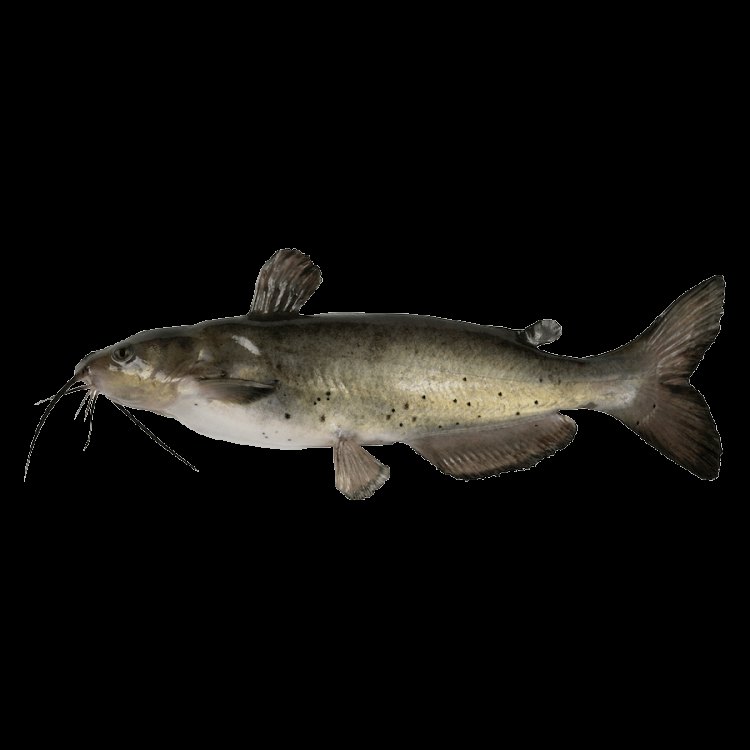
The Elusive Hardhead Catfish: A Master Predator of the Coast
Disclaimer: The content provided is for informational purposes only. We cannot guarantee the accuracy of the information on this page 100%. All information provided here may change without prior notice.




